Kingdom Plantae Family Poaceae Scientific name Spartina alterniflora Rank Species | Order Poales Genus Spartina Higher classification Cordgrass | |
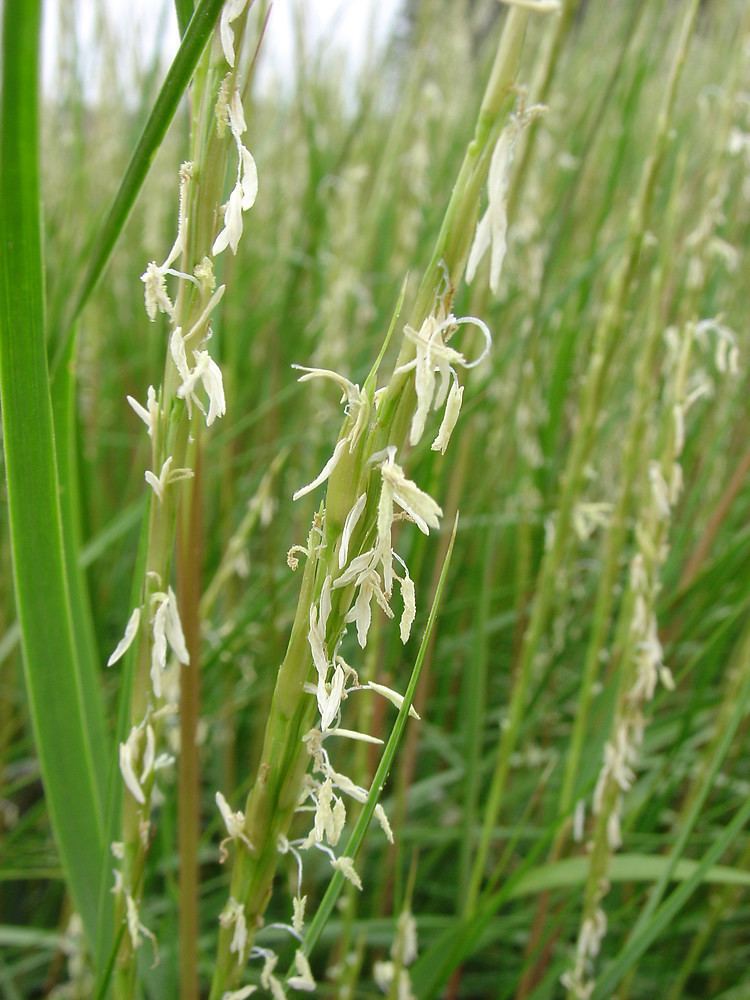 | ||
Similar Cordgrass, Spartina patens, Grasses, Spartina anglica, Juncus roemerianus | ||
How to identify salt marsh cordgrass spartina alterniflora
Spartina alterniflora, the smooth cordgrass, saltmarsh cordgrass, or salt-water cord grass, is a perennial deciduous grass which is found in intertidal wetlands, especially estuarine salt marshes. It grows 1-1.5 m tall (3-5 feet,) and has smooth, hollow stems which bear leaves up to 20-60 cm (8 inches-2 feet) long and 1.5 cm (1/2 inch) wide at their base, which are sharply tapered and bend down at their tips. Like its relative saltmeadow cordgrass S. patens, it produces flowers and seeds on only one side of the stalk. The flowers are a yellowish-green, turning brown by the winter. It has rhizoidial roots, which, when broken off, can result in vegetative asexual growth. The roots are an important food resource for snow geese. It can grow in low marsh (frequently inundated by the tide) as well as high marsh (less frequently inundated), but it is usually restricted to low marsh because it is outcompeted by saltmeadow cordgrass in the high marsh. It grows in a wide range of salinities, from about 5 psu to marine (32 psu), and has been described as the "single most important marsh plant species in the estuary" of Chesapeake Bay. It is described as intolerant of shade.
Contents
- How to identify salt marsh cordgrass spartina alterniflora
- Smooth cord grass salt marsh cord grass spartina alterniflora
- Problems as an invasive species
- References

S. alterniflora is noted for its capacity to act as an environmental engineer. It grows out into the water at the seaward edge of a salt marsh, and accumulates sediment and enables other habitat-engineering species, such as mussels, to settle. This accumulation of sediment and other substrate-building species gradually builds up the level of the land at the seaward edge, and other, higher-marsh species move onto the new land. As the marsh accretes, S. alterniflora moves still further out to form a new edge. S. alterniflora grows in tallest forms at the outermost edge of a given marsh, displaying shorter morphologies up onto the landward side of the Spartina belt.
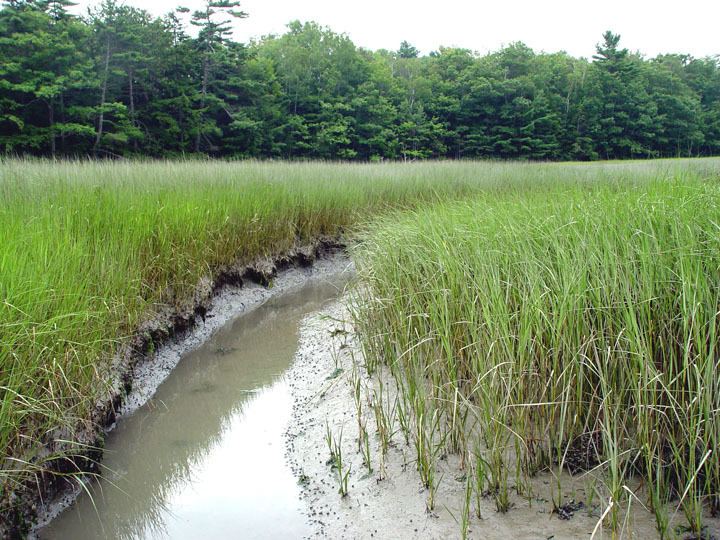
S. alterniflora is native to the Atlantic coast of the Americas from Newfoundland, Canada, south to northern Argentina, where it forms a dominant part of brackish coastal saltmarshes.
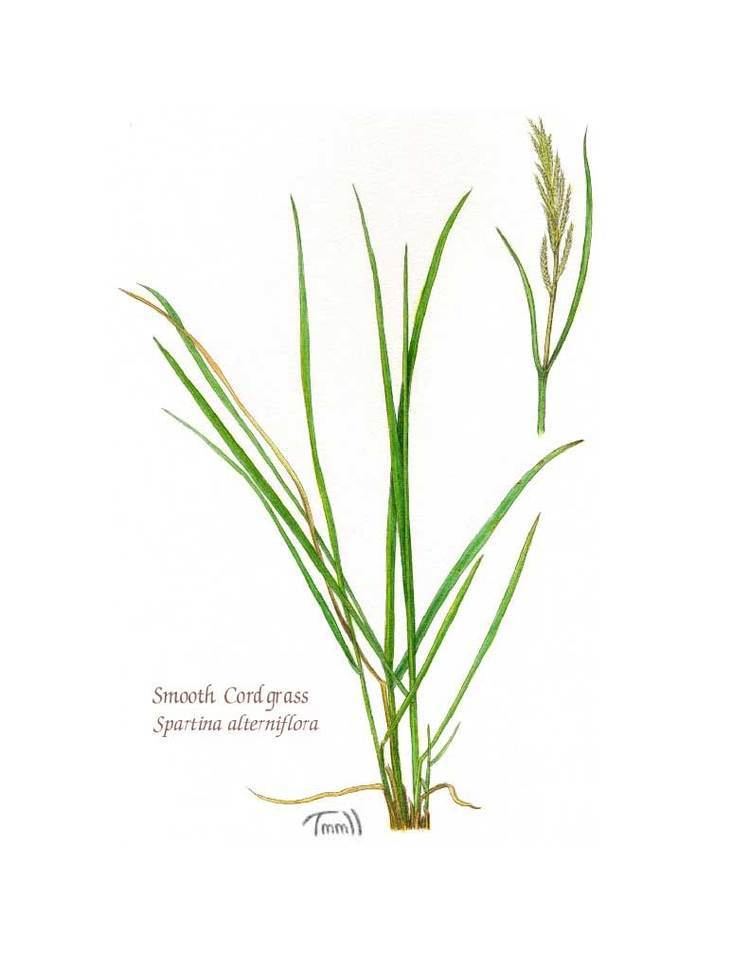
Smooth cord grass salt marsh cord grass spartina alterniflora
Problems as an invasive species
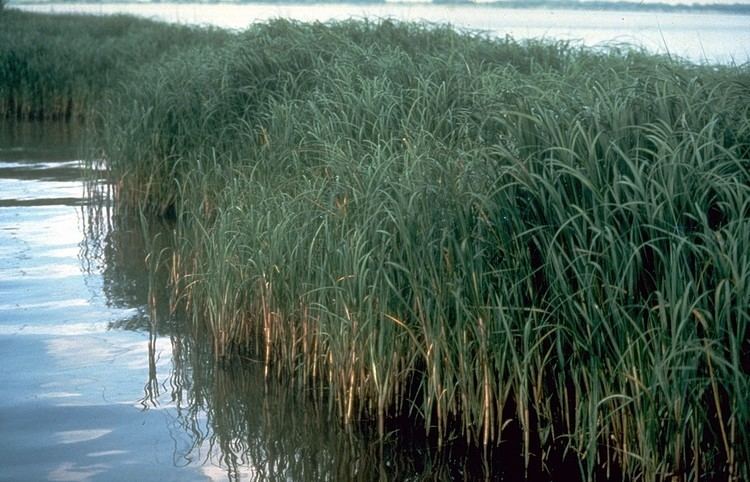
Spartina alterniflora can become an invasive plant, either by itself or by hybridizing with native species and preventing propagation of the pure native strain. One example of an invasive Spartina alterniflora hybrid is that of S. anglica. S. anglica is a fertile polyploid derived from the hybrid S.alterniflora × townsendii (S. alterniflora × S. maritima), first found when American S. alterniflora was introduced to southern England in about 1870 and came into contact with the local native S. maritima. S. anglica has a variety of traits that allow it to outcompete native plants, including a high saline tolerance and the ability to perform photosynthesis at lower temperatures more productively than other similar plants. It can grow on a wider range of sediments than other species of Spartina, and can survive inundation in salt water for longer periods of time. S. anglica has since spread throughout northwest Europe, and (following introduction for erosion control) eastern North America.
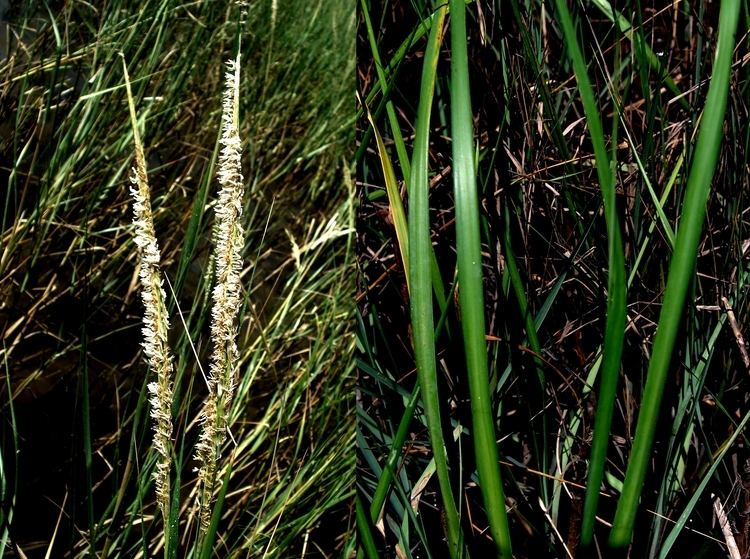
In Willapa Bay of Washington state, Spartina alterniflora was probably an accidental introduction during oyster transplants during the nineteenth century. Presently, it covers 6,000-10,000 ha (15 to 25 thousand acres) of land, according to a 1999 estimate. In contrast, in the 1950s, under 160 ha (400 acres) of Spartina alterniflora were present. It is also making inroads into Puget Sound and Grays Harbor in Washington. The grass can hinder water circulation and drainage or block boating channels. Meadows of S. alterniflora can crowd out native species, reducing biodiversity and altering the environment; as a result of S. alterniflora's growth, invertebrates that live in mud flats disappear as their habitat is overgrown, and in turn, food sources shrink for birds who feed on those invertebrates.
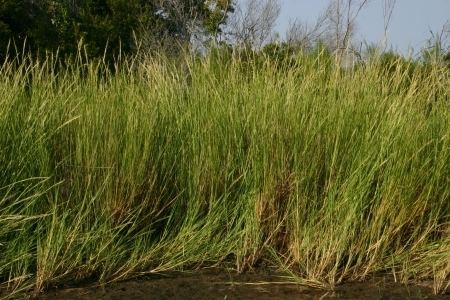
In California, four species of exotic Spartina (S. alterniflora, S. densiflora, S. patens, and S. anglica) have been introduced to the San Francisco Bay region. Spartina alterniflora is well established in San Francisco Bay, and has had the greatest impact of all the cordgrasses in San Francisco Bay. It was introduced in 1973 by the Army Corps of Engineers in an attempt to reclaim marshland, and was spread and replanted around the bay in further restoration projects. It demonstrated an ability to outcompete the native S. foliosa, and to potentially eliminate it from San Francisco Bay.
Spartina alterniflora has also been found to hybridize with S. foliosa, producing offspring that may be an even greater threat than S. alterniflora by itself. The hybrid can physically modify the environment to the detriment of native species, and the hybrid populations have spread into creeks, bays, and more remote coastal locations. The hybrids produce enormous amounts of pollen, which swamp the stigmas of the native S. foliosa flowers to produce even larger numbers of hybrid offspring, leaving the native Spartina little chance to grow as a pure strain. The hybrids also produce much larger numbers of fertile seeds than the native Spartina, and are producing a hybrid population that is not only increasing in numbers, but increasing in its rate of population growth. The hybrids may also be able to fertilize themselves, which the native Spartina cannot do, and which increases the spread of the hybrid swarm even further.
Several means of control and eradication have been employed against Spartina alterniflora where it has become a pest. Hand pulling is effective, but only when done thoroughly and carefully, lest the plant's seeds spread to infest other areas. Glyphosate, an herbicide, is approved in Washington to kill it. In Willapa Bay, leafhopper bugs (Prokelisia marginata) have been employed to kill the plants, which threaten the oyster industry there. Surveys, by air, land, and sea are conducted in infested and threatened areas near San Francisco to determine Spartina's spread.
The caterpillars of Aaron's skipper (Poanes aaroni) have only been found on this species to date.
